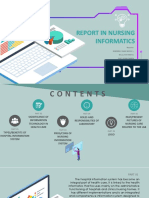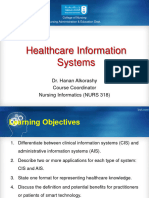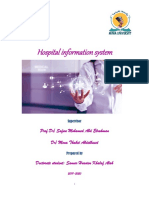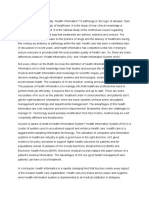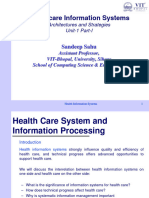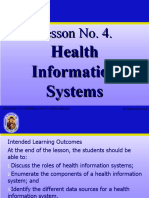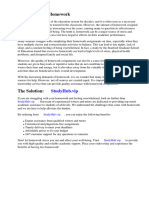0% found this document useful (0 votes)
28 views16 pagesPuter Information System - Introduction
A Computer Information System (CIS) integrates hardware and software to enhance organizational efficiency through effective information management. In the healthcare sector, Health Information Systems (HIS) streamline clinical, administrative, and financial operations, improving patient care and safety while reducing costs. Key components of HIS include patient portals, medical billing, and remote patient monitoring, which collectively enhance the accessibility and management of healthcare data.
Uploaded by
tanzilaaalamCopyright
© © All Rights Reserved
We take content rights seriously. If you suspect this is your content, claim it here.
Available Formats
Download as PPTX, PDF, TXT or read online on Scribd
0% found this document useful (0 votes)
28 views16 pagesPuter Information System - Introduction
A Computer Information System (CIS) integrates hardware and software to enhance organizational efficiency through effective information management. In the healthcare sector, Health Information Systems (HIS) streamline clinical, administrative, and financial operations, improving patient care and safety while reducing costs. Key components of HIS include patient portals, medical billing, and remote patient monitoring, which collectively enhance the accessibility and management of healthcare data.
Uploaded by
tanzilaaalamCopyright
© © All Rights Reserved
We take content rights seriously. If you suspect this is your content, claim it here.
Available Formats
Download as PPTX, PDF, TXT or read online on Scribd
/ 16







